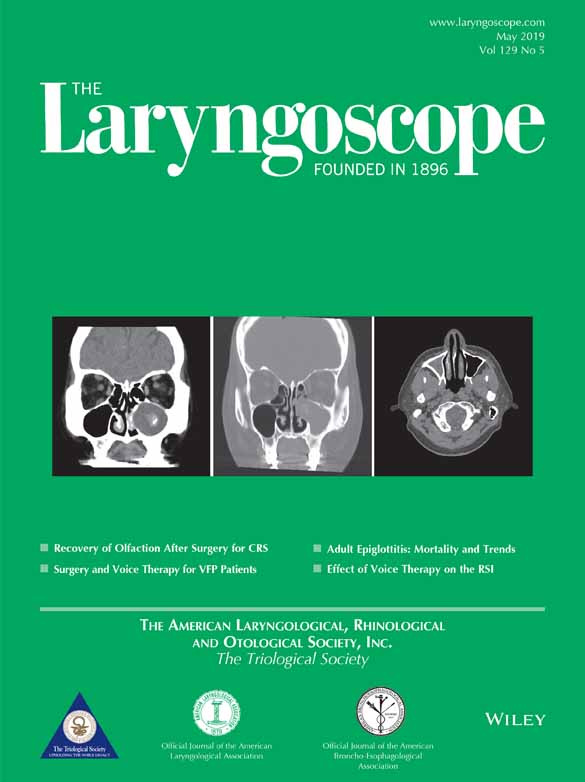Opioid prescription patterns and use among patients undergoing endoscopic sinus surgery
Abstract
Objectives/Hypothesis
Opioid-related deaths in the United States have increased 200% since 2000, in part due to prescription diversion from patients who had a surgical procedure. The purpose of this study was to characterize provider prescription patterns and assess patient-reported opioid use after endoscopic sinus surgery (ESS).
Study Design
Retrospective chart review.
Methods
Patients who underwent ESS between May 2017 and May 2018 were included. Opioid prescription, operative details, and postoperative opioid use data were extracted. The Massachusetts Prescription Awareness Tool (MassPAT) was queried to determine if patients filled their prescription.
Results
One hundred fifty-five patients were included. Nearly all patients received an opioid prescription (94.8%). An average of 15.6 tablets was prescribed per patient. Among 116 patients with MassPAT data, 91.4% filled their prescription. Among 67 patients who reported the number of tablets they had used at the time of first follow-up appointment, 73.1% reported taking no opioids. Mean number of tablets prescribed was significantly greater among patients who underwent primary versus revision surgery (16.5 vs. 13.5, P = .0111) and those who had splints placed (21.5 vs. 15.1, P = .0037). Predictors of opioid use included concurrent turbinate reduction (58.3% vs. 14.3%, P < .0001) and concurrent septoplasty (45.5% vs. 21.6%, P = .039).
Conclusions
Nearly all patients who underwent ESS were prescribed an opioid, and nearly all patients filled their prescription. However, the vast majority of patients did not require any opioid medication for postoperative pain control. As the opioid epidemic continues to persist, these findings have immediate relevance to current prescribing patterns and pain management practices.
Level of Evidence
4 Laryngoscope, 129:1046–1052, 2019




